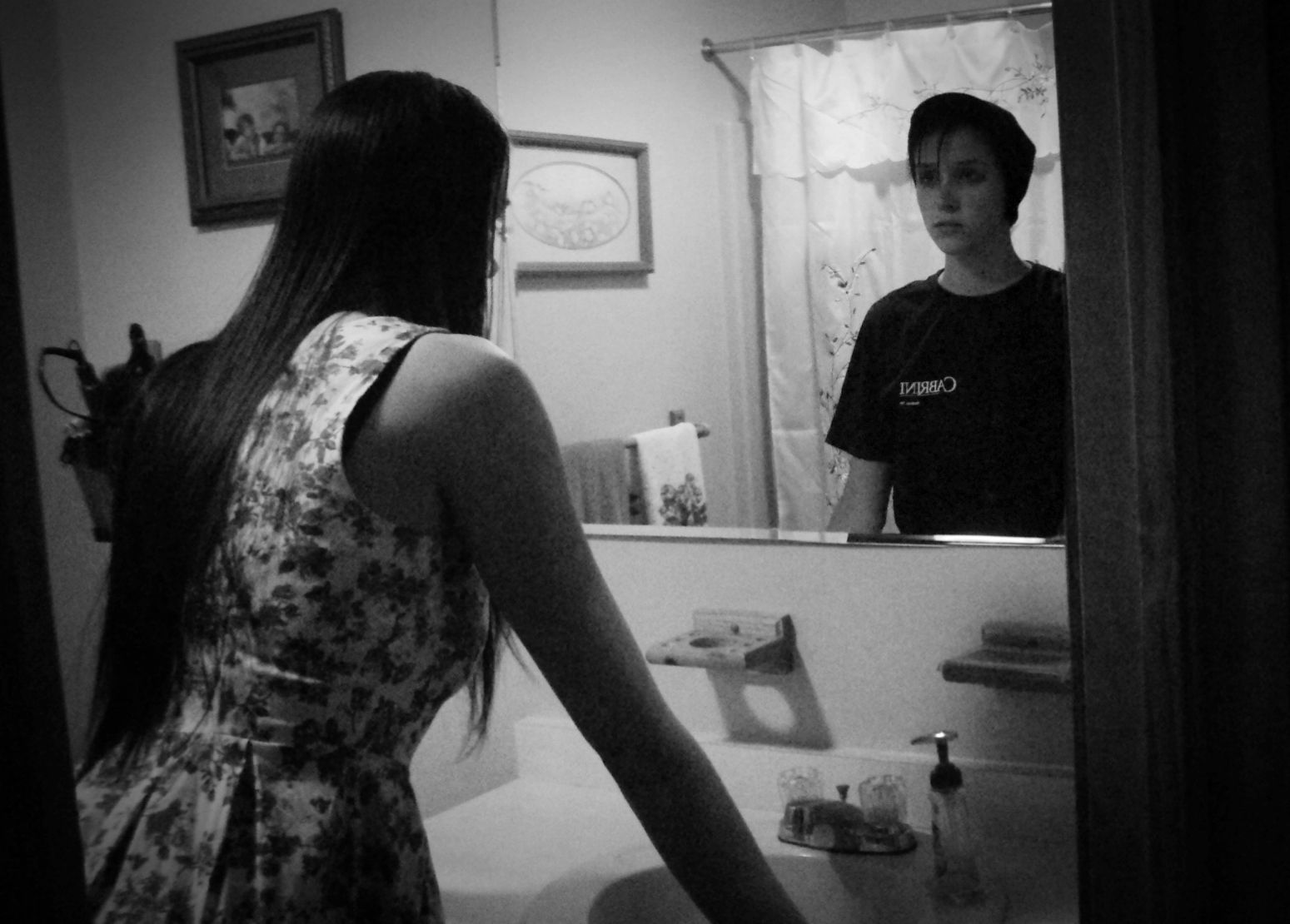Brandes Yenchick always knew he was not like other girls. When his sister was playing with dolls, he was racing with the boys.
“I always wanted to hang out with the guys, dress like a guy, be like the guys, everything guy related,” Yenchick said. “My parents would have to bribe me to wear dresses to family occasions.”
He never doubted that he did not fit in with the girls, but did not think he was anything more than a tomboy.
Yenchick said, “I didn’t even know what it was [to be transgender], but I had that battle in my head, and decided I was just going to be that really butchy, dykey lesbian, because that’s the closest I’m going to get. So I did that until I found out what transgender was.”

That was until he met his first transgender friend in high school. After befriending Aiden, Brandes learned about sexual identity and realized he was transgender.
“I would say, for me personally,” Brandes explained, “it means being born in a body that you don’t feel you should have been born in.”
Sarah Carter, the assistant director of intercultural education, engagement and assessment, works in the office of student diversity with students of the LGBTQ+ community and their allies at Cabrini University. Carter explained what it means to be transgender.
“A transgender person is a person who identifies with a different gender than the biological sex that we were born with,” Carter said.
For people who struggle to understand what it means to be born into a gender that does not match the gender a person identifies with, Carter clarifies that biological gender and gender identity are not necessarily the same thing.
“Your biological sex, your gender identity and your sexual orientation are not mutually exclusive,” Carter said. “Our brain is our gender identity. It’s how we see ourselves, how we identify with our gender. How we dress, how we act, how we behave. That’s our gender expression. Our sexual orientation is where our heart is and who we love and who we’re attracted to. And our biological sex is the biological parts that we were born with.”
Carter is a part of numerous educational training programs about diversity inclusion, social identities and ways to be allies. She hopes to make people more accepting of the LGBTQ+ community, especially with concepts so new, such as being transgender.
The LGBTQ+ community has made immense strides recently, specifically pertaining to homosexual rights.
Kate Brown became the nation’s first openly bisexual governor when she was sworn in as governor of Oregon on Feb. 18, 2015.
In the summer of 2015, the Supreme Court ruled in favor of legalizing marriage equality in the United States. Later that year, the Supreme Court stood by its decision, refusing to hear appeals of pending gay marriage cases and striking down bans across the country.
In November, comedian, talk show host and lesbian icon Ellen DeGeneres received the Presidential Medal of Freedom, the highest civilian honor.
Nationally, people have come to accept gays, bisexuals and lesbians as they are. The Pew Research Center reported in March 2016 that 57 percent of Americans support same-sex marriage, a number up 24 percent in the past 10 years.
However, transgender individuals do not receive the same universal acceptance and support. Only 41 percent of people surveyed think transgender individuals should be able to use the bathroom of the gender they identify with. Fifty-one percent of transgender individuals have been harassed or bullied in school and 61 percent were the victim of physical assault.

Yenchick expressed that in his experience, while younger people are often more understanding and accepting to gender identity, older generations struggle to get on board.
Supporting the transgender community is extremely important to the self-acceptance and attitude of transgender individuals.
The American Foundation for Suicide Prevention found that 41 percent of transgender or gender nonconforming people surveyed have attempted suicide, which is two-to-four times higher than the percentage of lesbian, gay and bisexual people who attempted suicide and almost ten times higher than the 4.6 percent of the overall population who report having attempted suicide.
Part of the reasons gays, lesbians and bisexuals are more widely accepted than transgender individuals may be because only 30 percent of U.S. adults say they know someone who is transgender, while a whopping 87 percent say they know someone who is gay.
Carter believes that people do not support the transgender community simply because they do not grasp the idea of what it truly means and how it truly feels to be a transgender person.
Carter said, “I think we’re in a space where there’s not a lot of understanding. Sometimes, people don’t understand and don’t hear people’s stories. And I think it’s important for people to have an open mind, because we’re all people and we all have different lived experiences and it’s important, especially in being an ally to members of the transgender community, to listen to what their needs are.”
Yenchick has received immense support from his friends and family that has enabled him to transition smoothly.
Jeanne Komp, associate professor for graphic design and fine arts at Cabrini University, has been Yenchick’s adviser for the past two years and has witnessed the effect transitioning has had on Yenchick’s outlook on life.
“Since Brandes began his transition, I feel like I am finally able to get to know the real person that he is,” Komp said. “Prior, he would be engaged yet quiet. Now, he is much more outgoing and vocal in class. Brandes appears happier and at peace with himself.”
Carter has immense empathy for the transgender community and its struggles. She hopes people can find that same empathy and help others like Brandes attain happiness in who they are.
“We can never have a full understanding of what that community goes through because if we don’t identity, then we don’t know,” Carter said. “But we can definitely have empathy.” “Knowing helps give us that empathy to be able to really listen to that community.”



